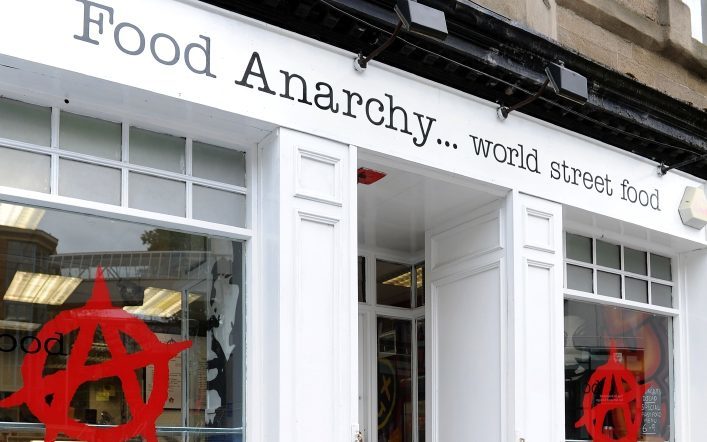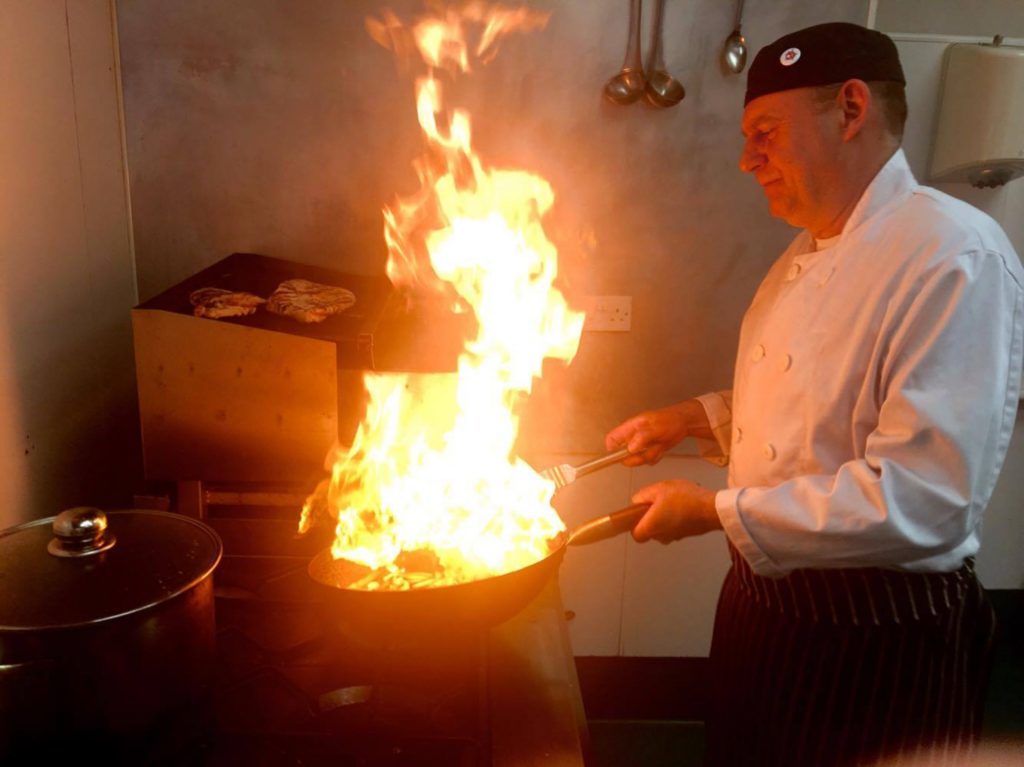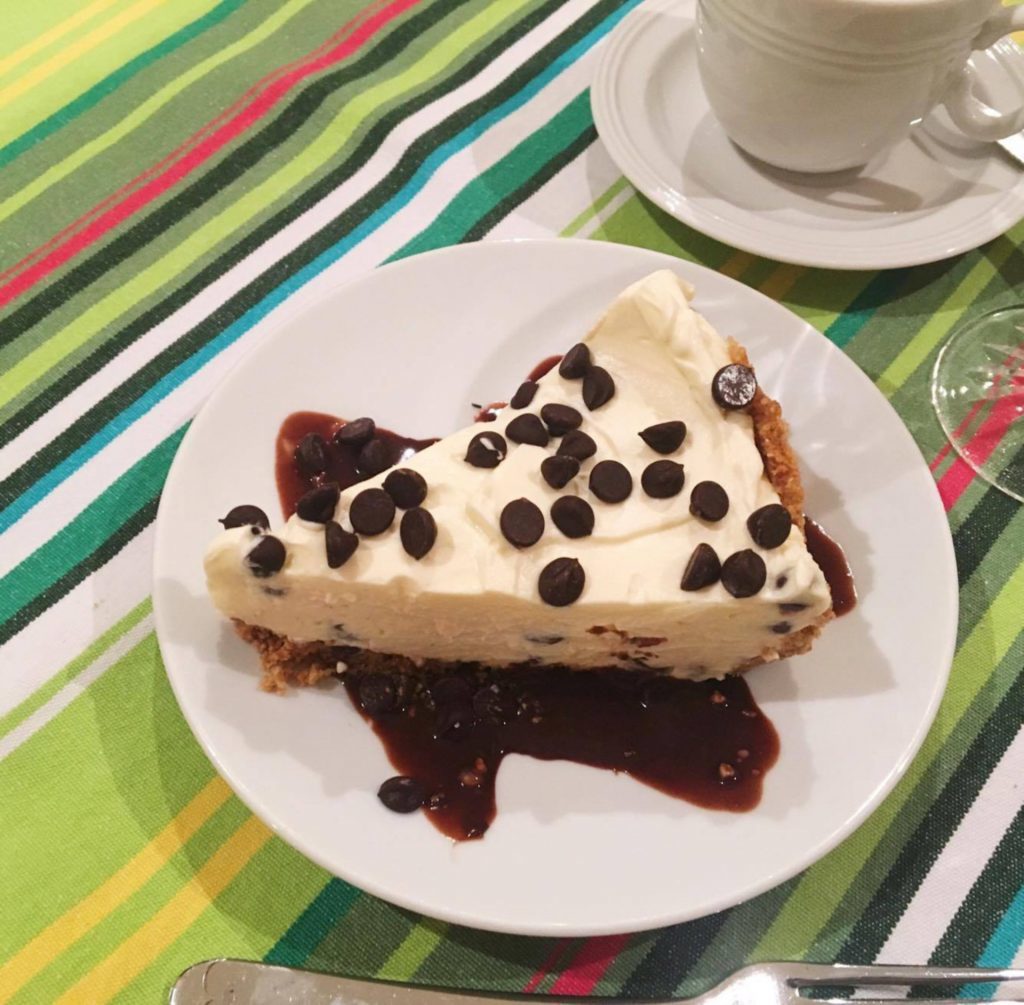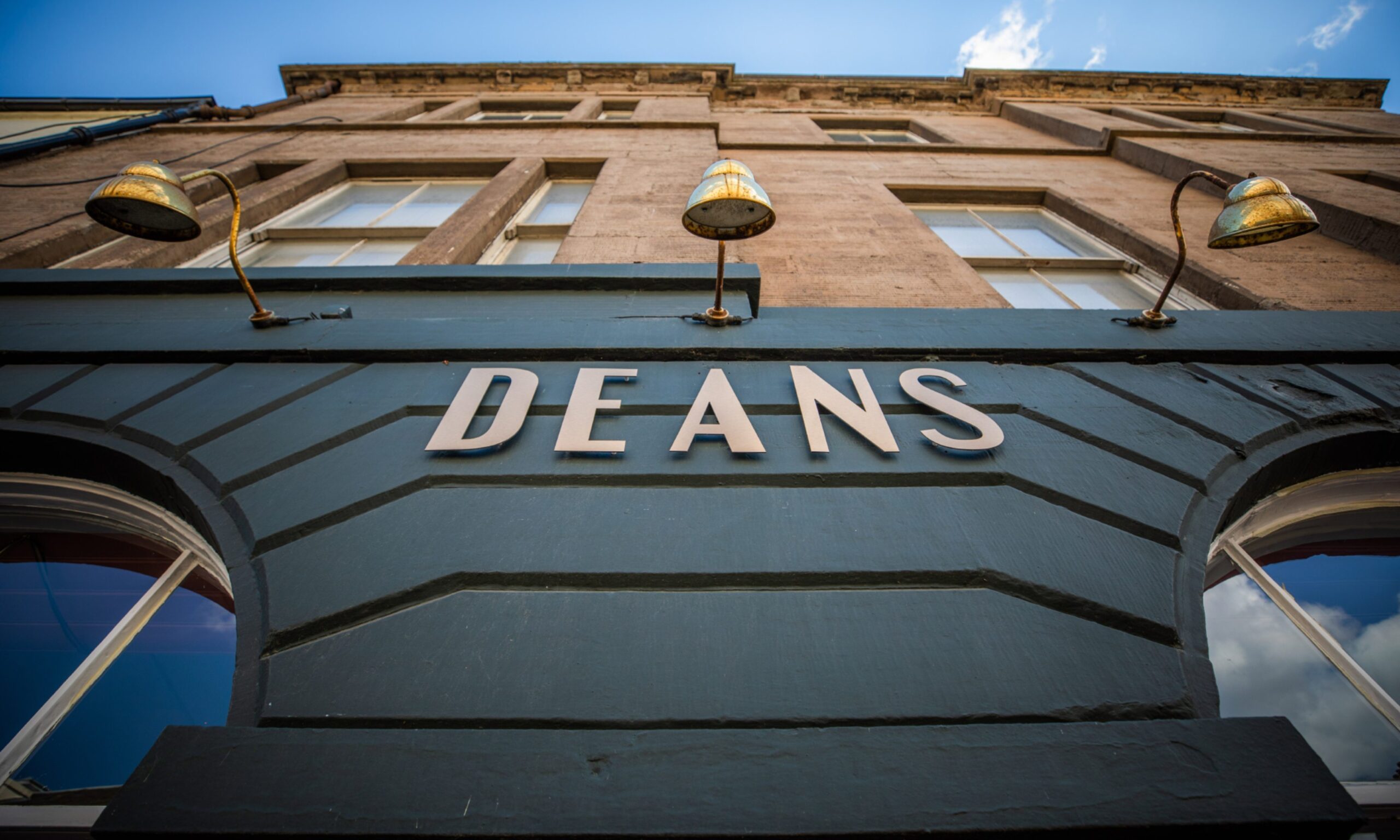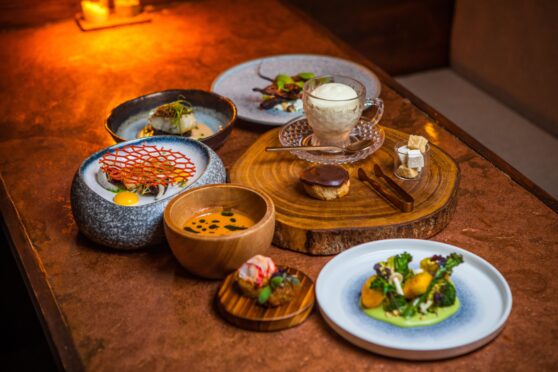A short-lived career as a jeweller when he left school at 16 led to Paul Morgans discovering a whole new pot of gold.
“When I turned 18 I got a part-time job in a local pub and it was here I discovered my love of hospitality,” says Paul.
“I travelled Europe and different parts of the world, experiencing different foods, where my passion continued to grow.
After qualifying as a chef he concentrated on getting as much experience as he could.
“I worked at the Garrick Street Wine Bar learning about posh nosh and presentation, and also part-time in an Indian restaurant in Tottenham Court Road learning as much as I could,” he recalls. “When I wasn’t cooking food, I was eating it, from Chinatown to the Ritz.”
And all this valuable experience paid off. After taking on a short term lease on a pub in Wandsworth, he turned it into a successful gastropub. This inspired him to run his own pubs with his father in South Wales.
By this point Paul had met Linsey, his wife to be, who originally hailed from Dundee. With their third child on the way, they decided to go back to Scotland and put down roots. Following a wealth of experience gleaned across Fife, Angus and Perthshire, Paul felt ready to put his ideas and inspirations into practice and opened Food Anarchy in Dundee’s buzzing Perth Road in January this year.
“Food Anarchy is an outward expression of my love of food and most definitely not the commercial side of catering,” he stresses. “Food is the king and we pride ourselves on making every dish as fresh to order as possible, making each dish unique to everyone who comes through the door.”
Just looking at the restaurant’s interior, where colourful street art denotes pieces of Paul’s past, you can tell this is a place that doesn’t take itself too seriously. Sited opposite Duncan of Jordanstone College of Art and Design, the arty vibe was created by two of Dundee’s famous street artists, Sykes and C. Gull.
“I want to offer a great vibe and good value while proving that restaurants and takeaways can offer healthy, homemade, fresh food, and not frozen ‘ping’ products,” he stresses.
Dishes at Food Anarchy range from European and Mediterranean to African and Asian, as well as catering for dietary requirements including coeliac disease, gluten intolerance, vegan and vegetarian diets. Now dipping into late summer’s seasonal larder with locally sourced seafood, pork, chicken and beef, Paul says: “Our menu changes every few weeks as the seasons and available fresh produce also changes.
“I love getting good feedback from customers and finding a new recipe that I have never tried.”
A big fan of all kinds of seafood – both to cook with and to eat – he admits he can’t stand tinned fish.
“The essence of the product is lost in the production. There is no good reason for using tinned fish when good fresh quality fish is available on our doorstep,” he huffs.
Having experienced and survived one major recession, Paul is understandably a little nervy about the restaurant’s future.
“It’s hard promoting a new business on a budget, while setting up a business from scratch means you never know what’s going to happen from one moment to the next but that is also the challenge,” he says philosophically.
Callum, the eldest of Paul’s three children, also works in the restaurant and Dad has sage advice for any youngsters setting out in the world of cheffing.
“Taste everything, work hard and never say no to trying different foods and flavours,” he says.
While Paul dreams of franchising Food Anarchy right across the UK, for the time being he’s happy doing what he loves best.
“I love being a chef, bringing new tastes, smells and flavours to the people of Dundee and hopefully igniting my passion in them.”
Food Anarchy, 142 Perth Road DD1 4JW. T: 01382 699124
Pitta bread with feta filo pastry cigars
Serves 4
Ingredients
For the pitta bread
250gms strong white flour, plus extra for dusting
1 x 7gms sachet instant yeast
20gms nigella seeds or black onion seeds
1 teaspoon salt
160ml water
2 teaspoon olive oil, plus extra for kneading
Directions
In a bowl, mix together the flour, yeast, seeds and salt. Add 120ml of the water and 1½ teaspoons of oil.
Using your fingers mix the ingredients together. Gradually add the remaining water and oil until all the flour has come away from the sides and you have a soft dough. (You may not need all the water; the dough should be soft and not sticky.)
Pour a little oil on to your work top. Place the dough on top and knead for 5-10 minutes.
The dough will be wet in the beginning but will form a smooth dough once kneaded. Once a smooth dough is achieved, place it into a clean, oiled bowl.
Cover and leave to prove until doubled in size.
Preheat the oven to 250C/475F/Gas 9 and place a clean baking tray or baking stone on the middle shelf.
When the dough has doubled in size, tip it out onto a work surface dusted with flour. Knock the dough back by folding it inwards over and over again until all the air is knocked out. Split the dough into 4-6 equally sized balls. Roll each ball into an oval shape 3-5mm thick.
Remove the hot tray from the oven, dust with flour and place the pitta breads on it. You may have to cook them in batches.
Bake for 5-10 minutes, or until they just start to colour. Remove them from the oven and cover with a clean cloth until they are cool. Serve with houmous and tzatziki to dip.
Feta-stuffed filo cigars
Makes 30
Ingredients
198g Greek feta cheese
1 medium egg, lightly beaten
¼tsp of dried mint
Pinch freshly ground pepper
½ package filo pastry 9”x14” (thick if available), defrosted
Directions
With a fork, crumble the feta cheese and place in a small bowl. Add the egg, the mint and the pepper and mix well.
After bringing to room temperature, unroll the sheets of filo. Place one sheet of the filo on the counter, brush it with olive oil, and cover it with a second sheet of filo. Cut these into 6 rectangles.
Spread about 1½ teaspoons of the Feta filling along the edge nearest to you. Roll the dough away from you so it forms a small roll, resembling a cigar. Brush a little olive oil along the long edge just before finishing, so the filo sticks together at the final roll.
Repeat this procedure until all the filo filling is gone, making sure to cover the unused filo dough with a towel so it does not dry out. Cover the filo cigars with cling film so they do not dry out. Refrigerate (or freeze) until ready to use.
Pour about half an inch of rapeseed oil in a wide pan and cook the “cigars” in a single layer over medium heat, for about one minute on each side until lightly brown and crispy. Remove from the pan carefully and place on a plate lined with paper towels to absorb some of the oil. Serve at once.
Portuguese king prawn stuffed squid in a garlic and tomato seafood sauce with garlic rice
Serves 4
Ingredients:
3 onions
4 cloves garlic
2 chorizo sausage
300g cooked fresh king prawns
12 small fresh squid
2 eggs
2tbsp olive oil
6 tomatoes, chopped
2 bay leaves
2tbsp parsley, chopped
Salt and pepper to taste
500g rice
Directions
Clean and wash the squid.
For the stuffing, chop one onion, one garlic clove, the chorizo, king prawns and the tentacles from the squids and mix them together in a bowl.
Crack the eggs into this mixture and blend thoroughly. Then stuff the squid sacs with the mixture and close them with a toothpick.
Fry the other chopped onion and garlic in a frying pan with olive oil for a couple of minutes on medium heat, add the tomatoes, the bay leaf, some parsley, salt and pepper to taste. Simmer for 10 minutes on low heat.
Add the stuffed squid to a baking dish and cover with the sauce in the frying pan.
Cook in the oven at 185C for 25-30 minutes until done.
Once done, top with the chopped parsley and serve.
Serve the squid on top of a bed of rice and drizzle the sauce over.
Italian cannoli cream pie
Serves 8 (or four hungry people!)
Ingredients
250g cream cheese, softened
1tsp pure vanilla extract
375mls double cream
250mls whole milk ricotta cheese
185g icing sugar
Dash of ground cinnamon
½ tsp orange zest, optional
185g mini chocolate chips
For the 9in pie crust base
375g digestive biscuit crumbs
75g melted butter
4 tbsp caster sugar
For the topping
125 mls double cream
2 tbsp icing sugar
Directions
Using an electric mixer, beat cream cheese until smooth and creamy.
Add the vanilla extract to the double cream and beat on high until it thickens and soft peaks form.
Reduce speed and mix in the ricotta cheese, icing sugar, cinnamon and orange zest until blended.
Fold in 125g chocolate chips.
Make pie crust by mising the biscuit crumbs, melted butter and caster sugar.
Mix ingredients together. Spray a 9-inch spring form pan with cooking spray and press mixture on the bottom and sides of pan.
Bake at 180˚C for about 8 minutes. Cool completely before filling.
Spread mixture into the pie crust. Chill for 3-4 hours or preferably overnight until set.
Before serving prepare whipped cream topping by beating the double cream and icing sugar.
Pour heavy cream in a medium bowl and mix on high using a whisk attachment until soft peaks form then stir in the icing sugar.
Spread on top of set cheesecake. Sprinkle with remaining chocolate chips and serve with the topping.
